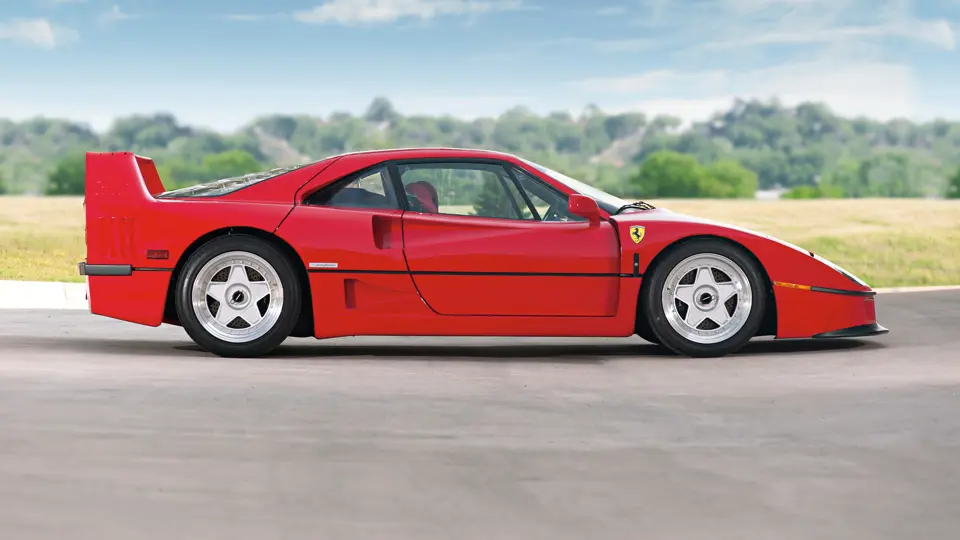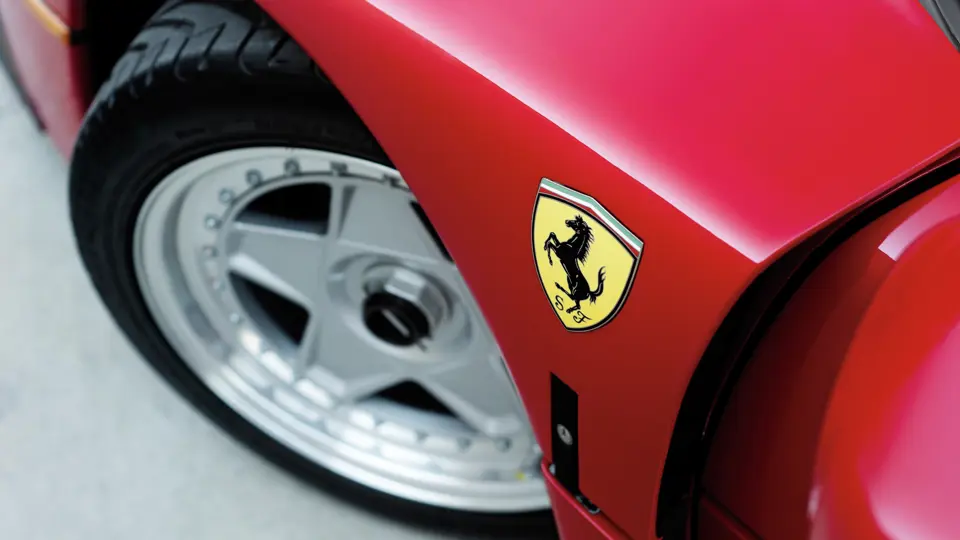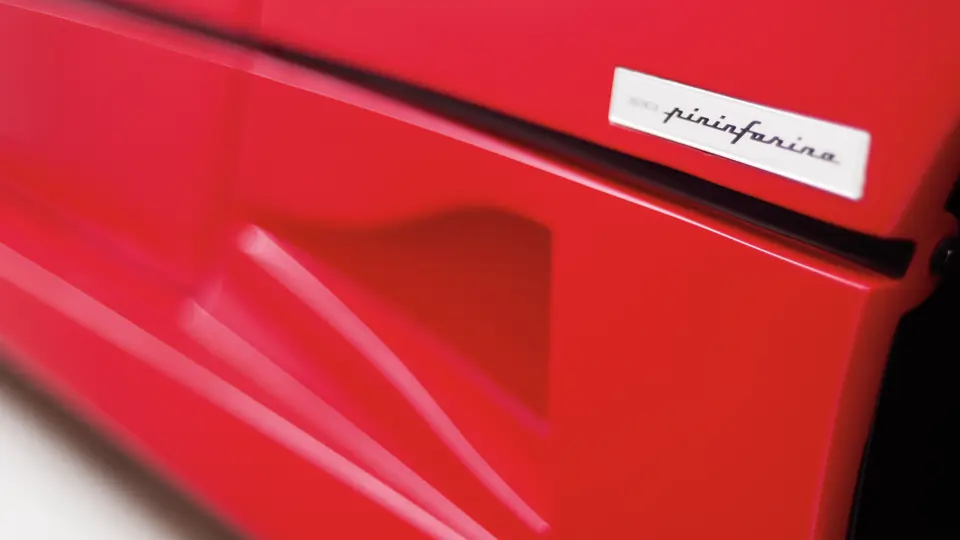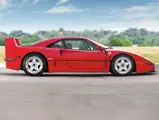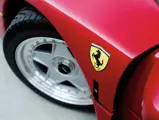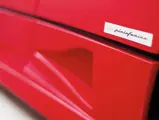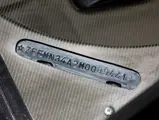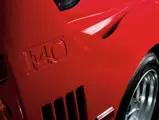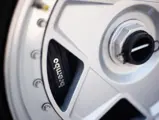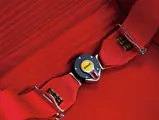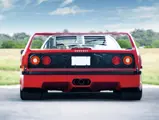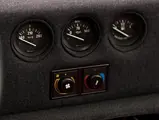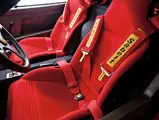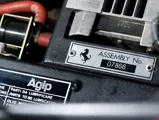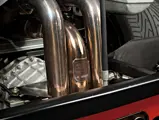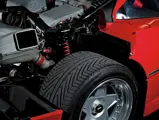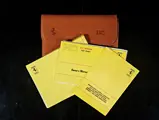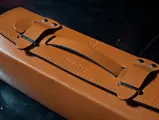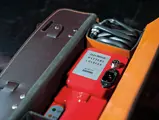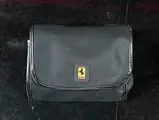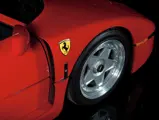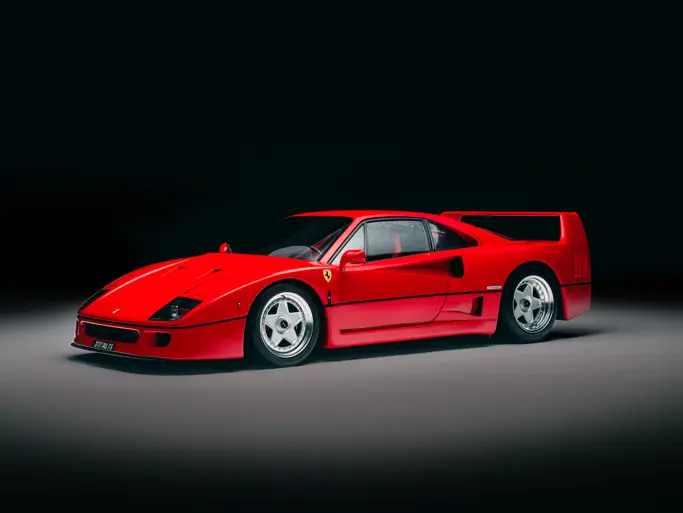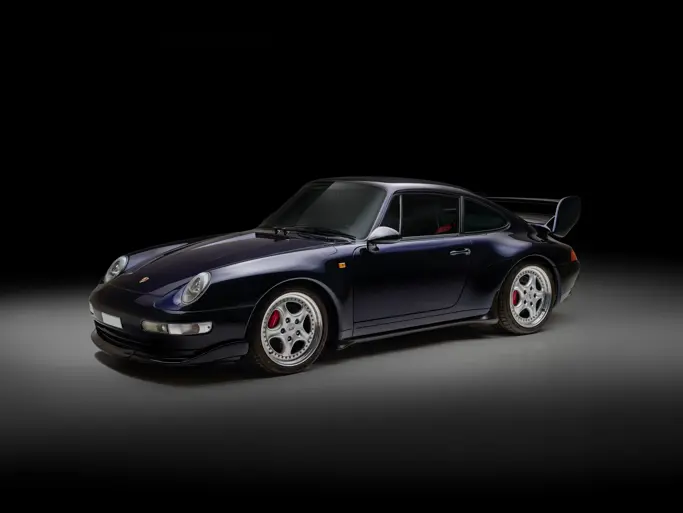478 hp, 2,936 cu in DOHC twin turbo-charged fuel-injected V-8 engine, five-speed manual transaxle, independent front and rear suspension by coil springs and wishbones, and four-wheel hydraulic disc brakes. Wheelbase 94.5"
• Ferrari Classiche certified
• 478 hp twin-turbocharged V-8
• 4,600 indicated miles
Introduced in 1987, Ferrari’s F40 supercar was a shock to the senses and combined raw-edge, radical styling with state-of-the-art technology in its engine, body, and chassis design. Without question, driving an F40 is a visceral experience, hammering the senses with brutal acceleration, go-kart quick reflexes, and a howling exhaust note that is music to the ears of the devoted enthusiast. The experience is addictive—a powerful narcotic even.
Conceived in 1986, the F40 project was intended to celebrate Ferrari’s 40th anniversary. Il Commendatore is reported to have said, “Let’s make something special for next year’s celebrations, in the way we used to do it.” The name was suggested by a friend of Ferrari, Gino Rancati, who received a silver plaque to commemorate the occasion. It was inscribed, “To Gino Rancati, for a brilliant idea.” An accompanying letter said, “Dear Rancati, with this plaque I want to commemorate our meeting on the 4th June, when you kindly contributed to the choice of name for the GT car we presented at the Frankfurt motor show. Your contribution has produced excellent results —the ‘F forty,’ based on the idea of forty years of Ferrari cars, identifies and personalises the fastest Ferrari GT. Kindest regards, G.B. Razelli.” Next to this, in slightly shaky script with violet ink, was, “To Signor Gino, Ferrari.” Sadly, the F40 was to be the last car that Enzo would see launched by the company he founded.
In true Ferrari tradition, the F40 bridged the gap between the company’s road cars and racing cars, further representing a progression of the 288 GTO Evoluzione. Cost-no-object engineering produced technical specifications that remain the stuff of fantasy, even today. A carbon-fiber and Kevlar-reinforced steel space frame chassis with composite body panels was mated to an Evoluzione twin-turbocharged and intercooled four-cam, port-injected V-8 engine, controlled by a race-proven Weber-Marelli engine management system and producing close to 500 brake horsepower.
All told, the 1,100-kilogram heavy F40 was capable of blinding performance. Fast Lane magazine road tested the F40 in the late-1980s, achieving zero-to-sixty times of just 3.9 seconds. From a standstill, Ferrari’s supercar accelerated to 100 miles per hour in just 7.8 seconds and to 140 miles per hour in 14 seconds! Independent testing revealed even quicker acceleration times. Regardless of the source, the F40 proved to be the fastest road car ever produced, and its performance abilities remain simply staggering in every respect.
While the initial production run was limited to about 400 examples, the market demand was so overwhelming—even with the car’s stratospheric price tag—that production continued until 1,315 F40s were built by the time production ended in 1991. American enthusiasts, however, had to wait until 1990 for the chance to own one. With such strong demand, U.S.-specification cars traded for thousands above their list price. Over a three-year period, only 213 examples were built for the U.S. market.
Chassis number 89441 has been tracked by Ferrari experts since it was originally advertised in the Los Angeles Times by Ogner Motorcars, of Woodland Hills, on October 13, 1991. It was first sold in 1992, but for the next 10 years, it was stored in a temperature-controlled room as part of a fine arts collection. In 2002, it was offered by Newport Autosport, showing only 530 miles.
A major service was completed in 2003, and by the following year, the car still only had 4,218 indicated miles and two owners from new. At the time, its advertisement for sale noted that the car had a Tilton lightweight clutch and aluminum flywheel, a Tubi competition exhaust system, and drop-down gears “to make this one of the fastest and rawest F40s we have seen.”
Subsequently owned by Rocky Santiago, it retained its immaculate original paint, perfect unblemished seat covers, dash felt, and carbon fiber panels. With only four owners from new, this F40 is described as extremely clean and completely up-to-date, with regards to maintenance. It is Ferrari Classiche certified and includes a tool kit, all books, and the factory car cover. Competition seat belts have been fitted, but the originals are included, as are the original tires, for concours display. If ever there was a Ferrari meant to be Rosso Corsa, this is it.
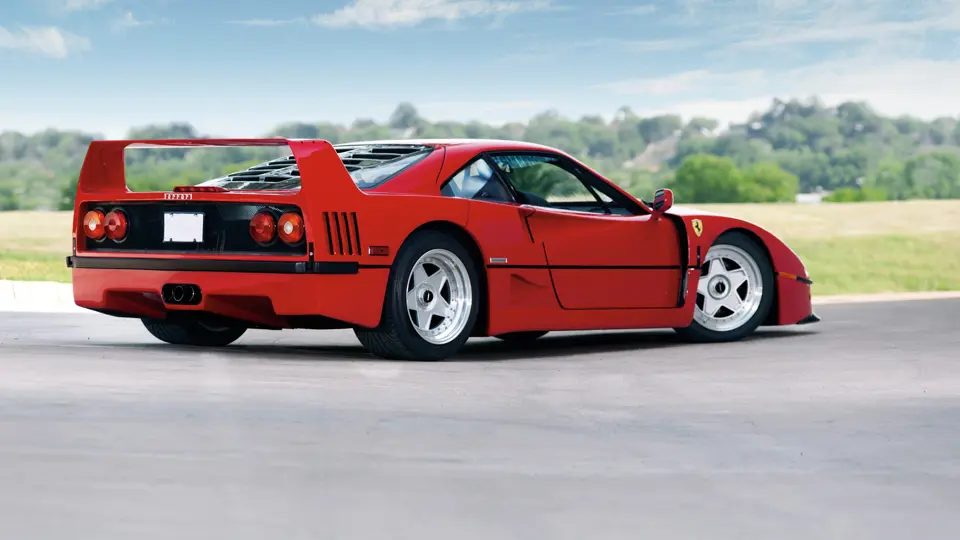



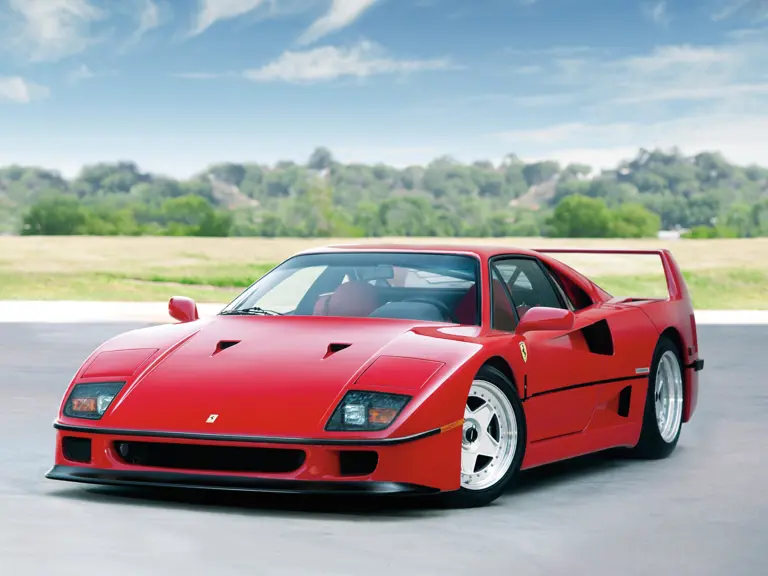
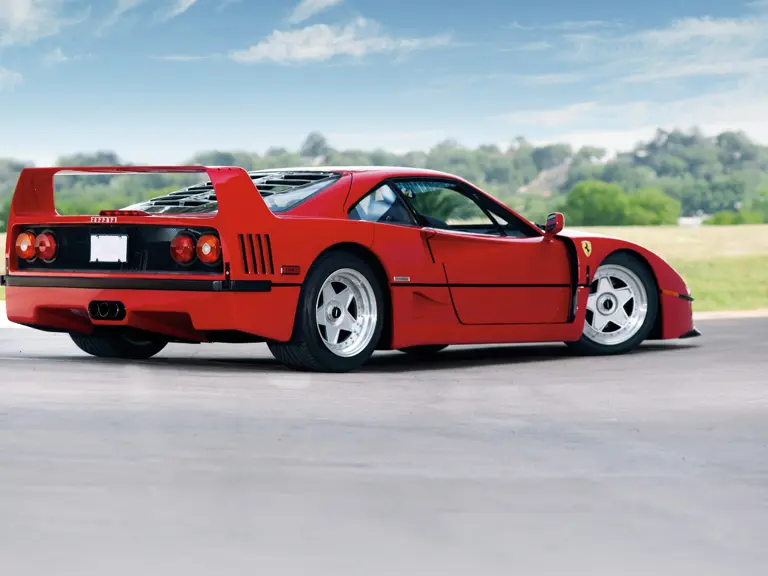
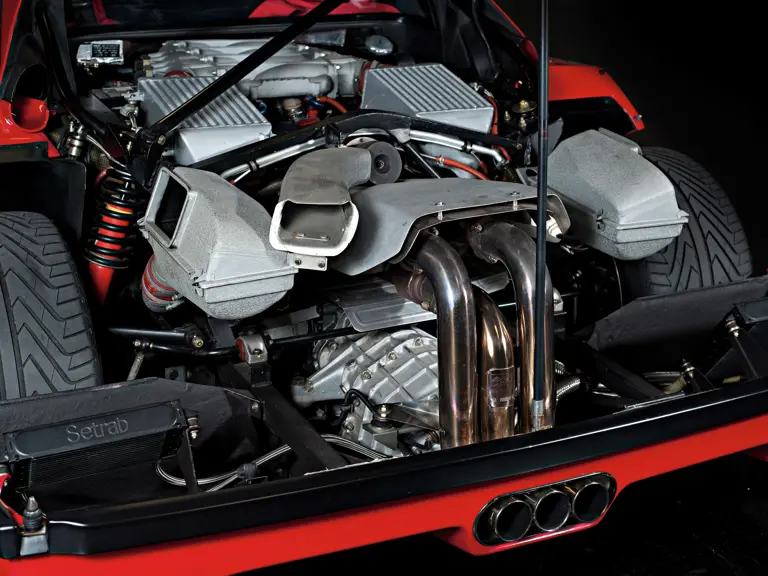
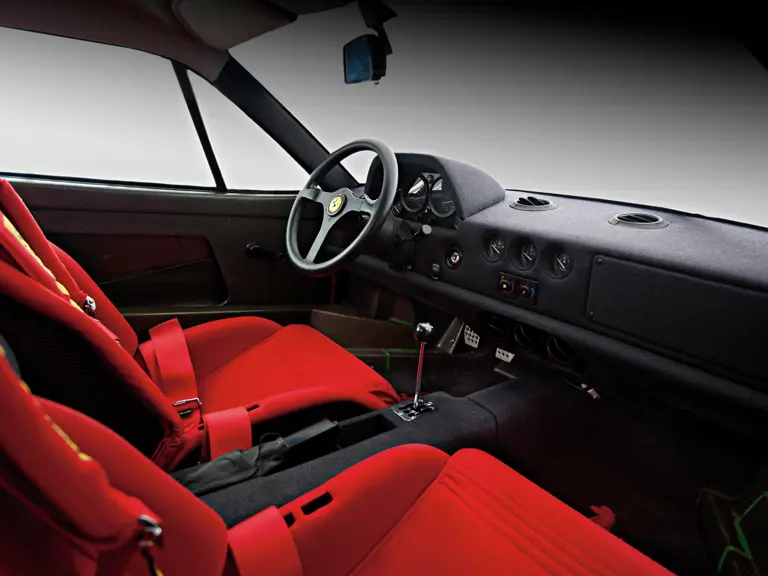
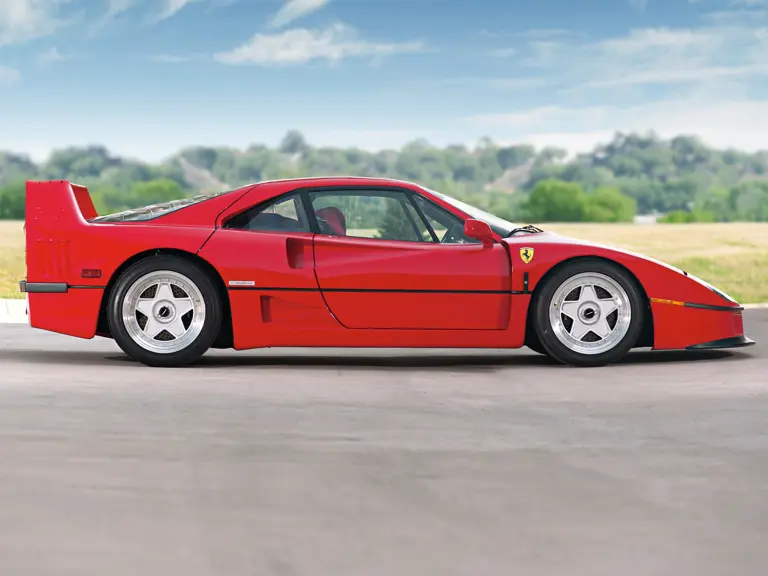
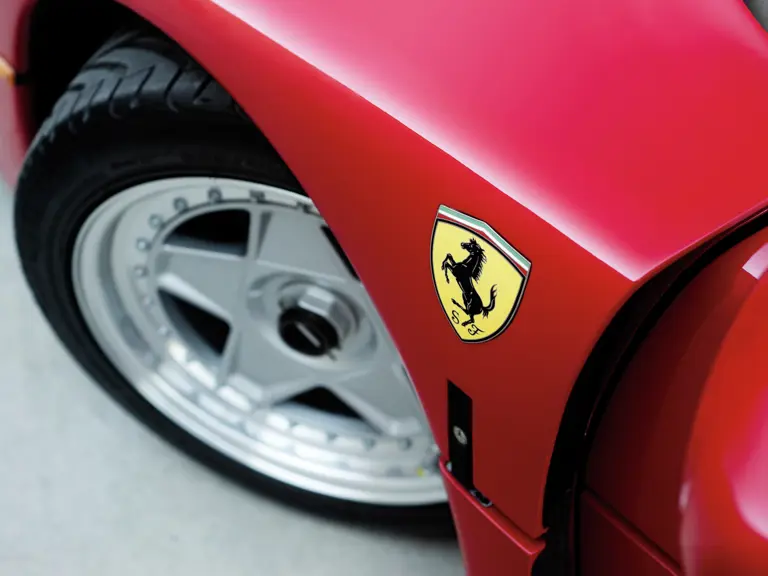
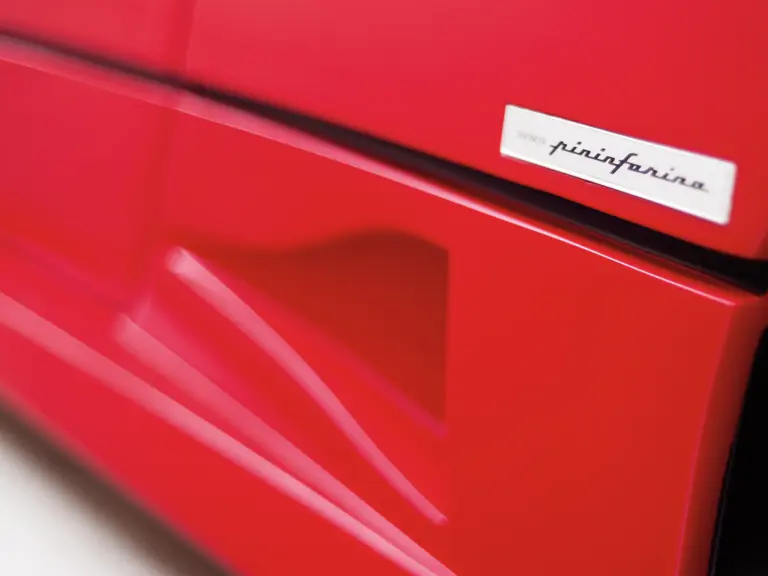
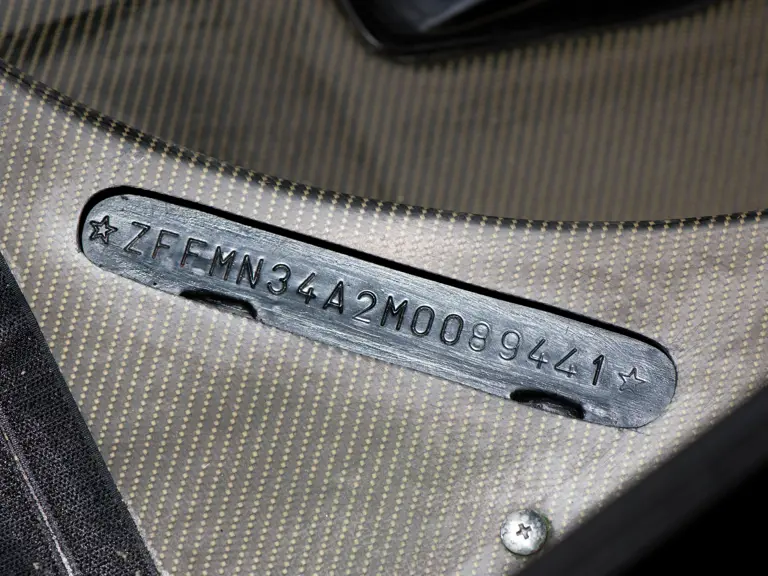
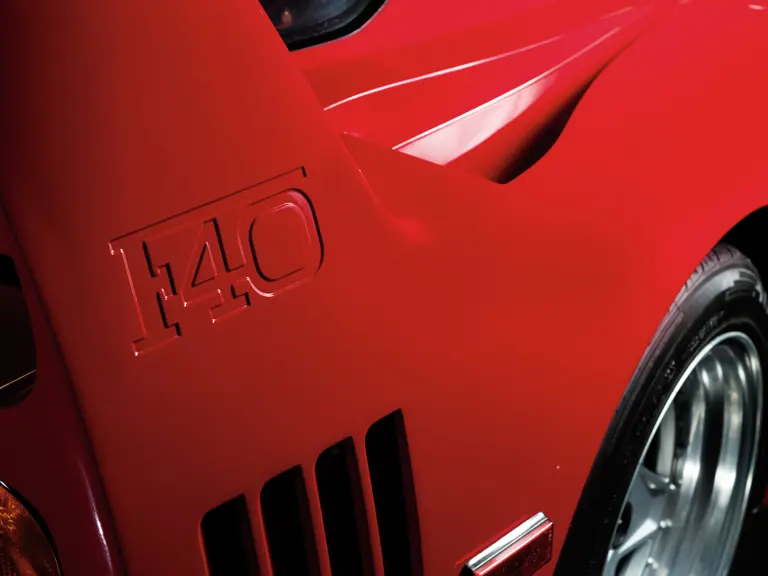


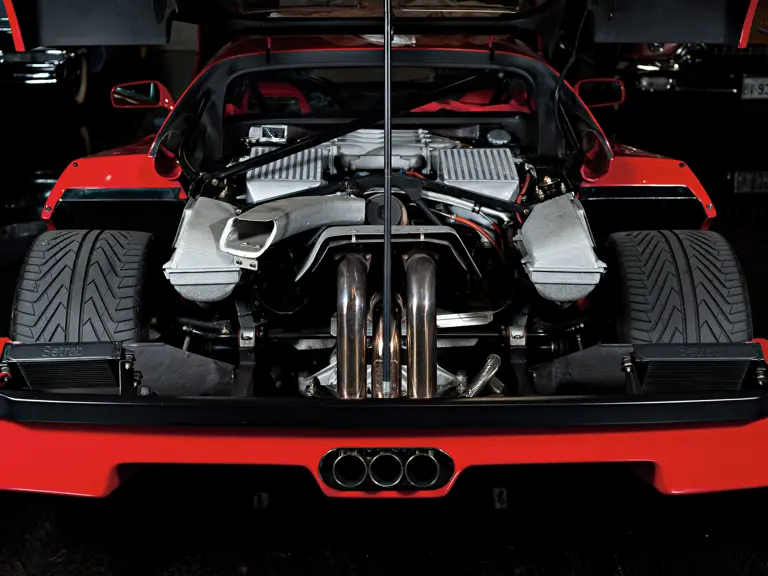
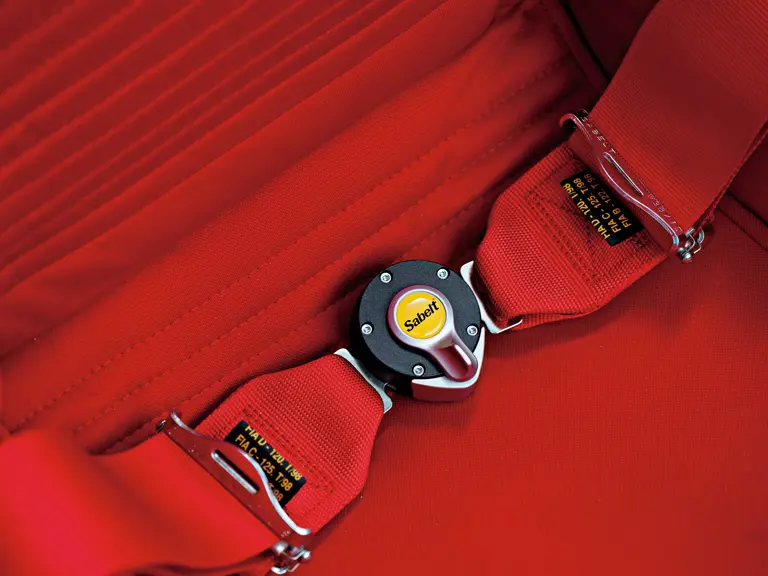
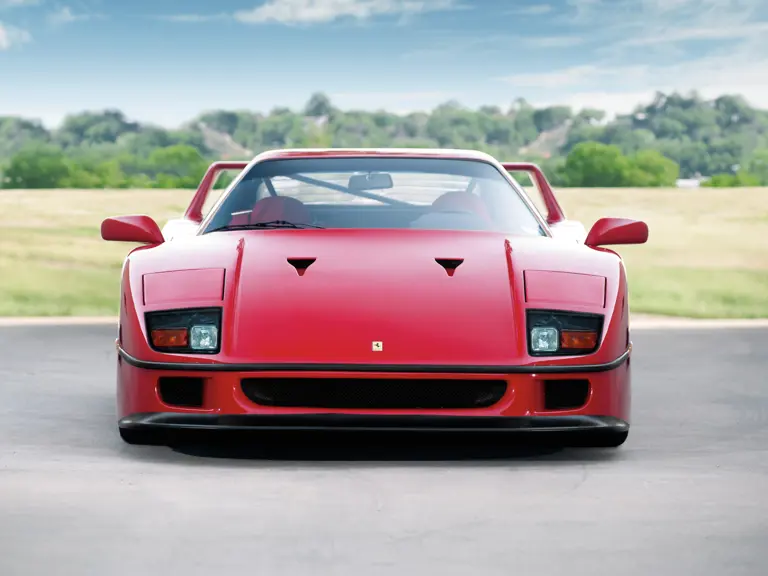
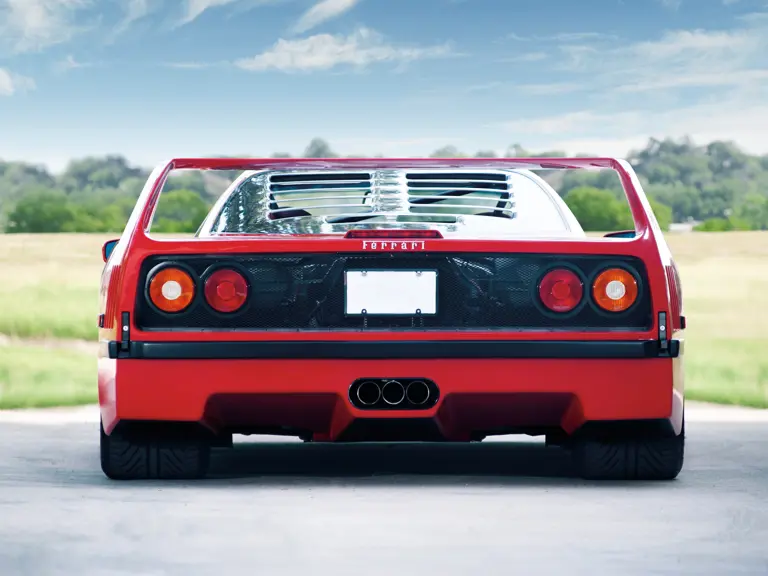
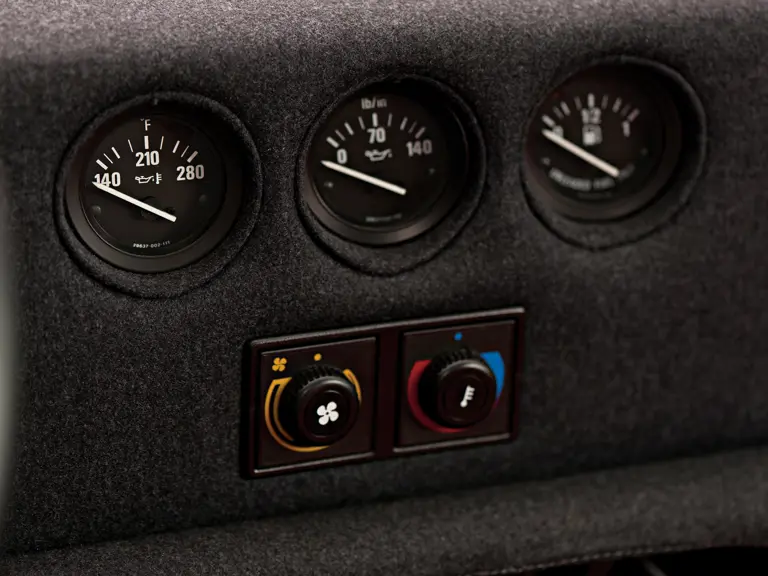
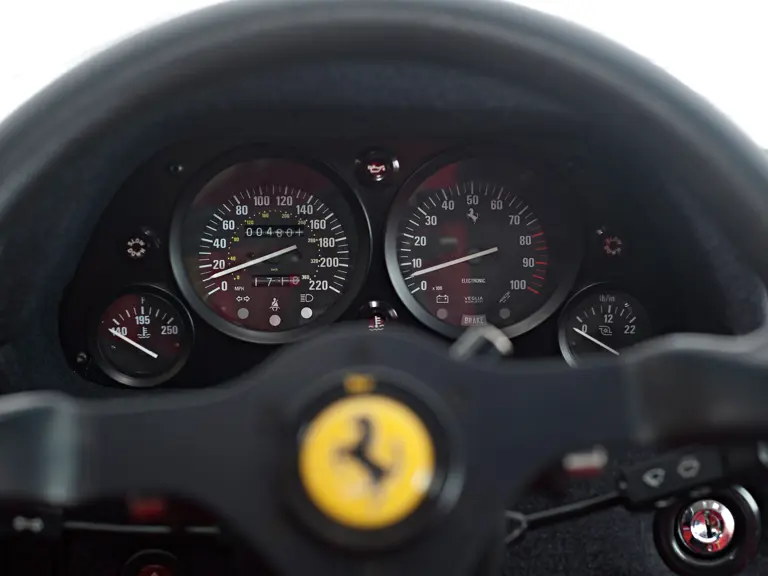

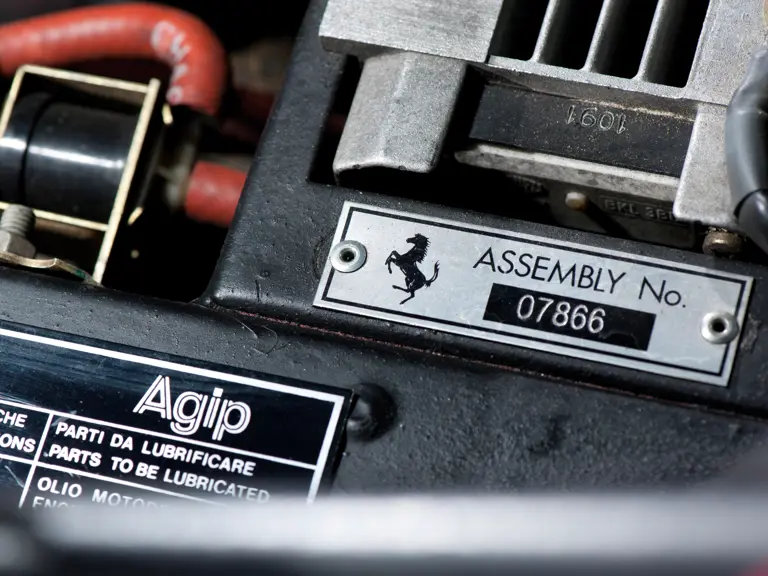
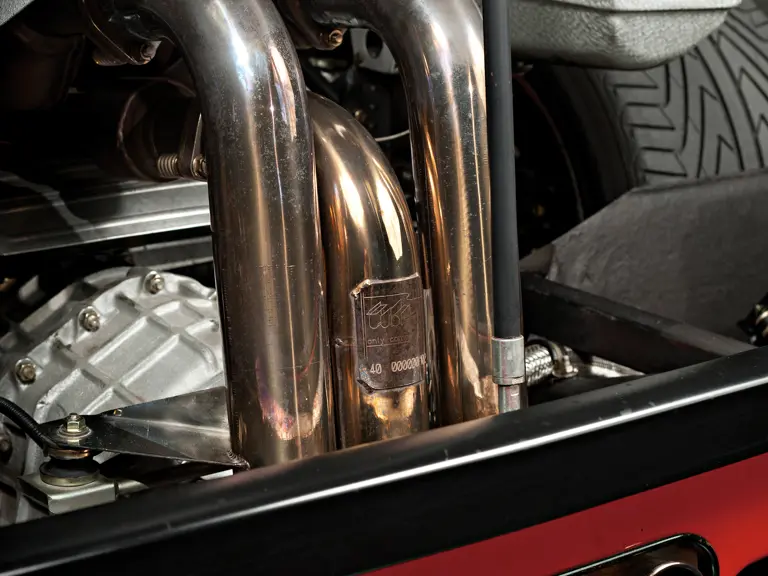
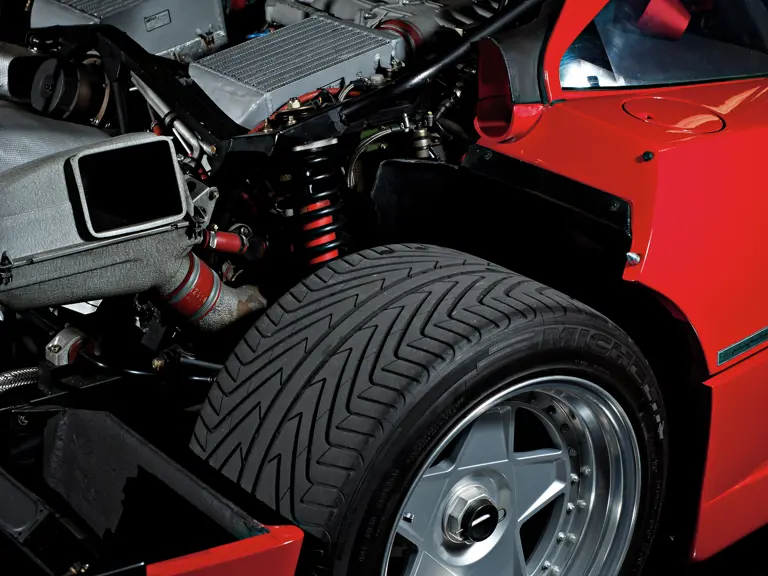

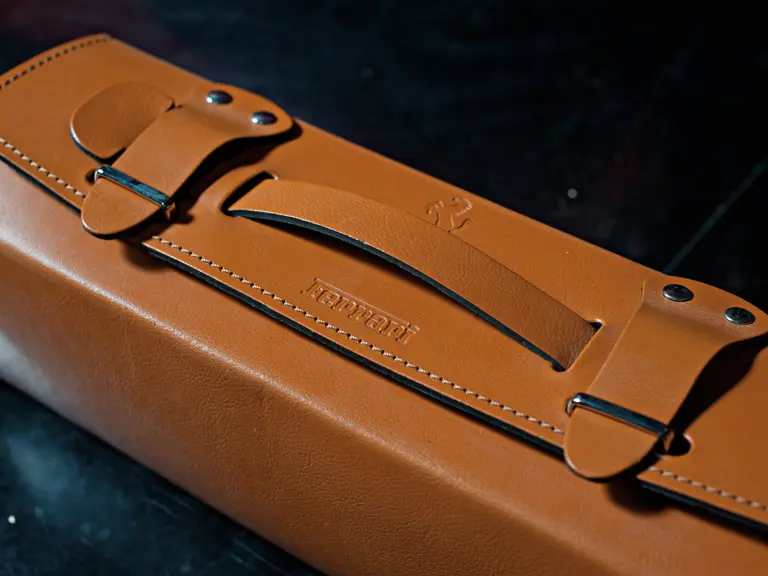
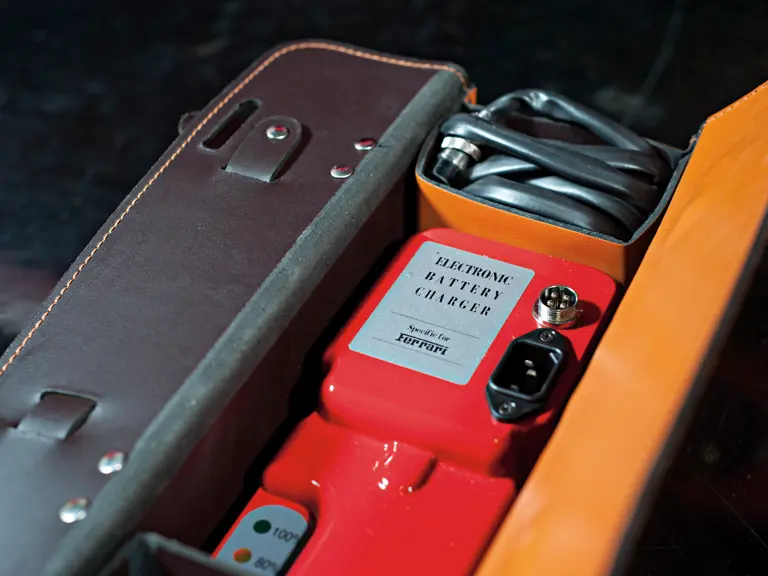
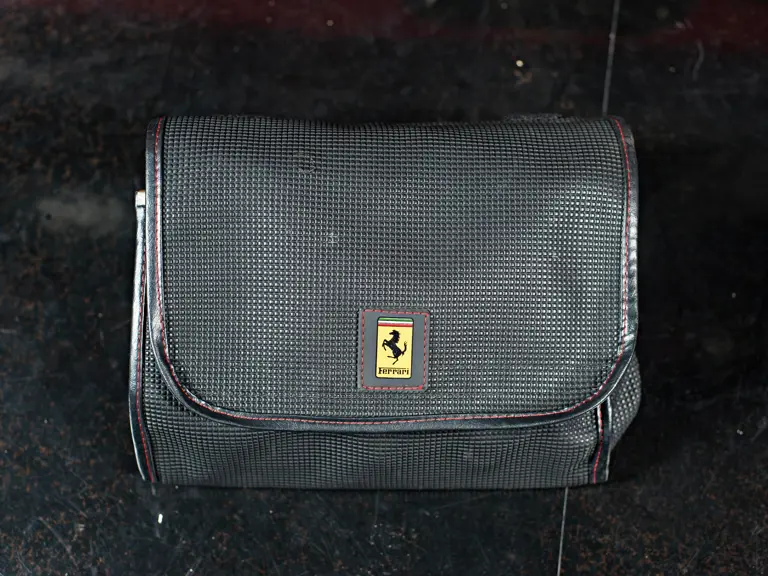
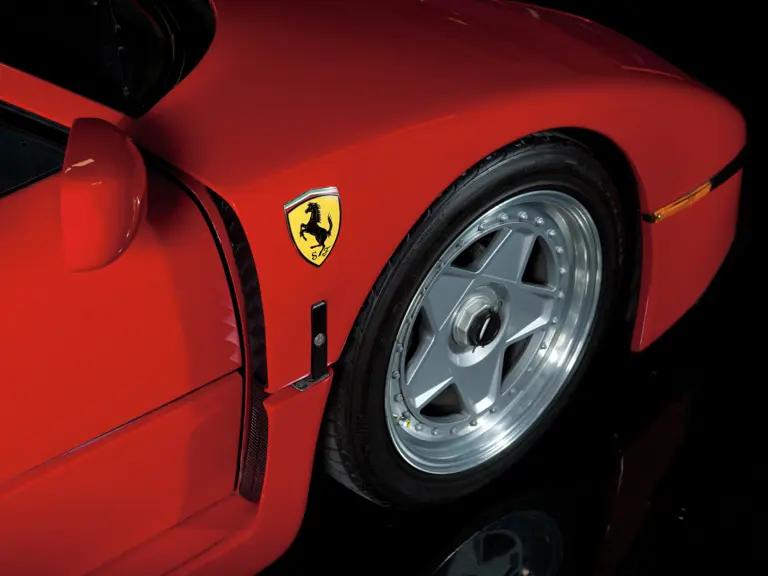
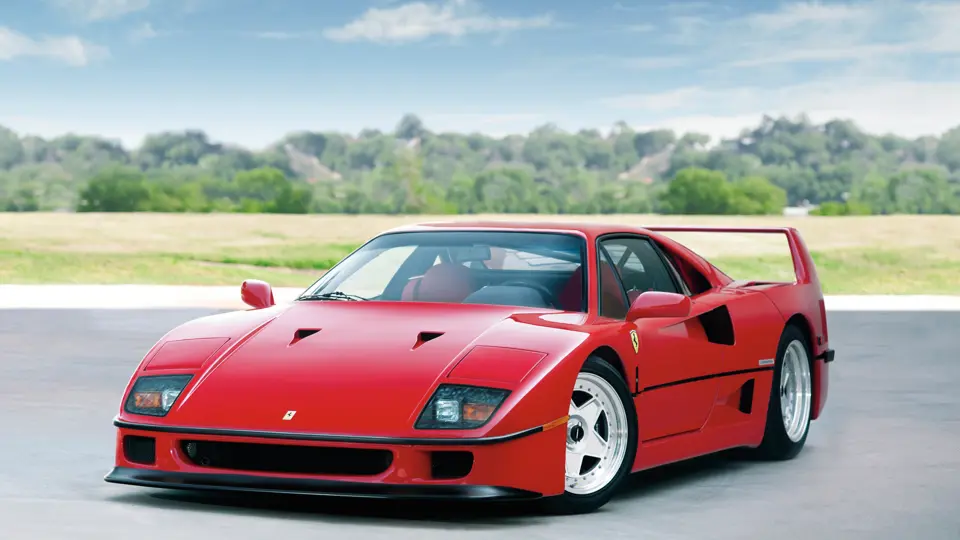
 | Monterey, California
| Monterey, California
